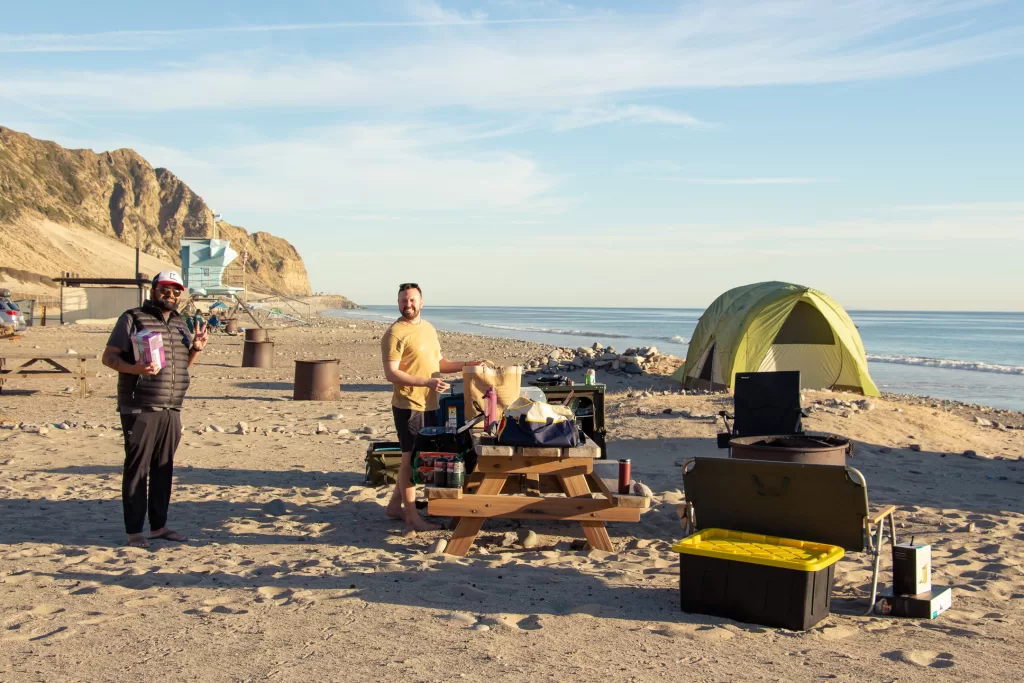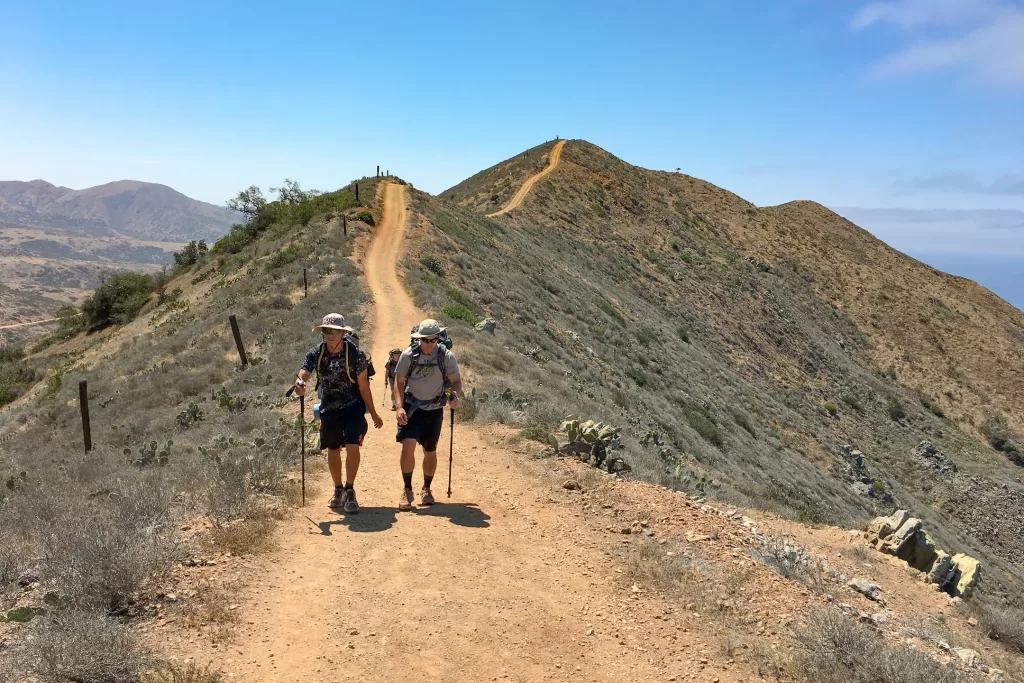Ever since 2016, I’ve had a fascination with long-distance hiking trails. This curiosity has led me to explore some of the most iconic long trails in the country, including a thru-hike of the John Muir Trail. My experience of spending 17 days in the Sierra Nevada Mountains was incredible and only deepened my curiosity about other extended backpacking trips. With that in mind, here is my list of long-distance trails I hope to complete in this lifetime, from shortest to longest.
Timberline Trail – 40 miles

The Timberline Trail is one of the premier hiking trails under 50 miles in the entire country. It circles the state’s highest point, Mount Hood, as you pass through alpine landscapes, deep river valleys, dense forests, and countless mountain views. This trail is a great way to immerse yourself in the beauty of the Pacific Northwest. It also gives you a taste of long-distance hiking, especially if you’re short on time. Most people spend 3-5 days on trail, depending on their fitness and hiking pace. Ideally, you’ll head out between July and September when the snow has melted.
There are a few trailheads you can start from, but most choose to leave out of the Timberline Lodge. Parking is free (just get there early, as it will fill up), and they have an iconic breakfast buffet that makes for the perfect celebration after completing your hike. Its exteriors were also used in The Shining, which adds to its charm.
As you hike, expect downed trees, river crossings, and some serious elevation gain. However, you’ll also be rewarded with gorgeous views, ever-changing landscapes, and an unforgettable experience. Since it’s a loop trail, you don’t have to worry about shuttling vehicles from one terminus to the next. And the best part is that permits are free and easy to get. Simply show up at a designated trailhead and fill out a self-issued permit. They are required from May 15 to October 15.
High Sierra Trail – 70 miles
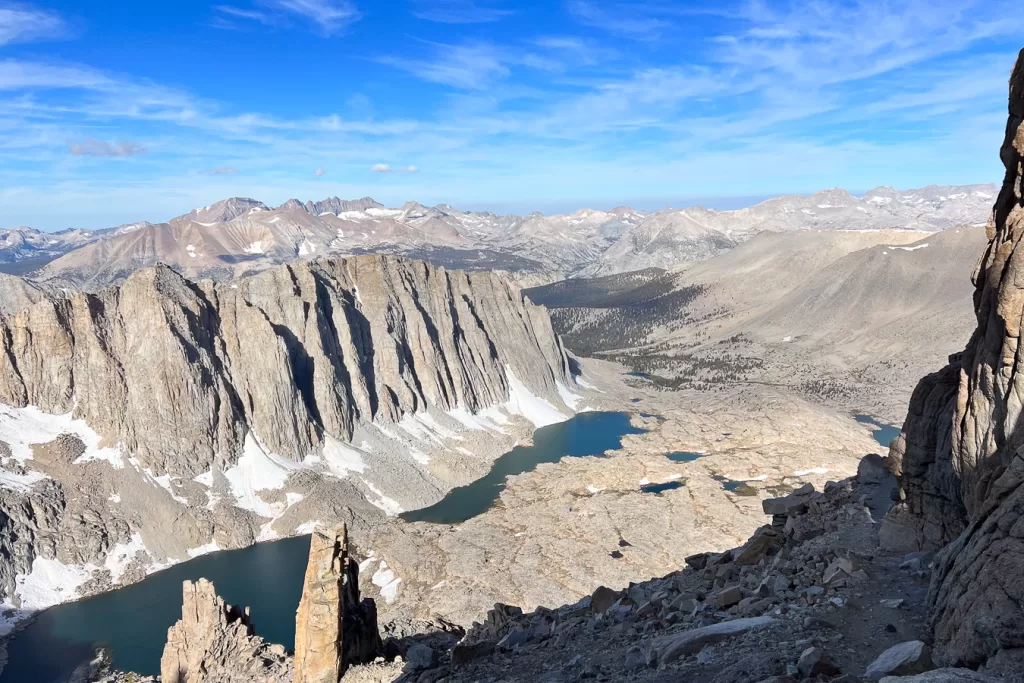
After hiking the John Muir Trail, I’ve been scheming another long-distance hiking trail through the Sierra Nevada Mountains. And the High Sierra Trail is high on my list. As opposed to the JMT, which travels north-south through the mountains, the HST traverses them west to east. Starting at Sequoia National Park’s Crescent Meadow Trailhead, you work your way for 70 miles, ending at Mount Whitney, the highest point in the contiguous United States. You cross no roads or developed areas once you leave, so it’s a true wilderness experience.
Since this hike is point-to-point, transportation is a little complicated. There are shuttles available during the summer. Otherwise, you’ll need to take multiple cars or have someone drop you off and pick you up. You’ll also need to obtain a High Sierra Trail wilderness permit via recreation.gov. Quota season runs from late May to Late September, and permits become available six months from their issue date. You can also try your hand at a walk-up permit, which is available starting at 1 PM the day before your trip at the designated trailhead desk.
After navigating the red tape, the only thing left to do is to hike the trail! You’ll traverse through stunning alpine meadows, glacially carved canyons, and granite mountain passes, reaching elevations well above 10,000 feet. With breathtaking views at every corner, you get to experience the best that Sequoia National Park has to offer. From hot springs to cold alpine lakes, and from exposed summits to densely forested valleys, it’s a true adventure that I’m looking forward to completing one day.
Wonderland Trail – 93 miles
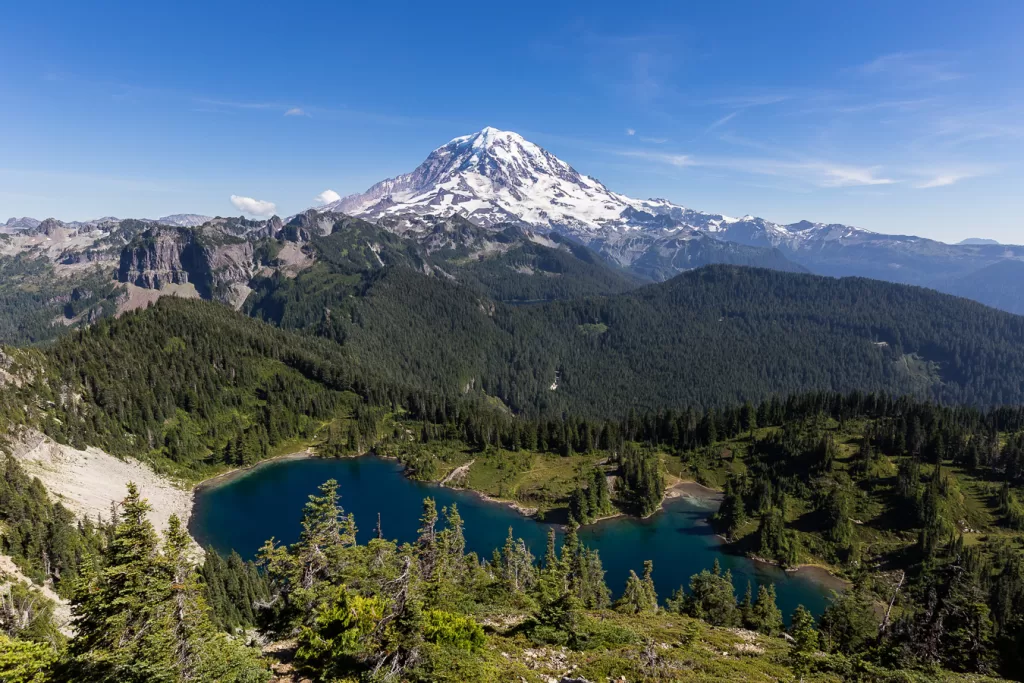
I’ve known about the Wonderland Trail for years and hope to traverse this long-distance hiking trail sometime soon. It’s about 100 miles long, which is the perfect length to get a wilderness experience without having to leave your other commitments behind.
The hardest part about this trail is actually getting a permit. Unlike other long-distance hiking trails, you must stay at designated campsites each night. As a result, building an itinerary can be a logistical challenge, as most thru-hikers spend about 10-14 days on trail, and you’ll have to secure sites for each day. About two-thirds of permits are released early via a lottery if you want to plan ahead. However, if you’re flexible and don’t mind sporadic hiking intervals (e.g. five miles to a campsite one day and then 20 to camp the next day), then walk-up permits are also available.
As for the hike itself, soak up endless stunning views of Mount Rainier as you traverse through volcanically and glacially carved landscapes. Like other mountain trails, July through September are the best times to hike.
Also, if I ever get my mountaineering skills up to an adequate level, I’d love to try the infinity loop. This infamous route involves climbing up and over Mount Rainier, trekking back to your starting point via the Wonderland Trail, summiting over the mountain again, and then hiking back to your starting point in the opposite direction, forming a figure 8, or infinity symbol. Whether I attempt this one day is up to God, but I’m not going to throw out the possibility anytime soon.
Uinta Highline Trail – 104 miles

The Uinta Highline Trail is a hike that’s been on my radar for over five years, and I can’t wait to carve out some time to hike it. Traversing Utah’s Uinta Mountain Range, it’s unique in that it sits mostly above treeline, giving you a true, alpine experience. Stunning lakes and expansive vistas line nearly the entire trail, making it tough to find a bad view.
Depending on which trailhead you start at, you’re hike will range from 65 to 104 miles, and will take anywhere from 6-10 days to compete. You’ll need a shuttle or a multiple-car system to transport yourself from one terminus to the other. However, it does not require a permit, which should make planning a trip much easier.
Because it’s so high in elevation, you’ll have to wait until the snow melts before attempting this trail. Most years, the hiking window falls between mid-July and mid-September. Exposure is also a challenge for most hikers. Without tree cover, you’re at the mercy of the beating sun, rain and snow, and large swings in temperature. Be wary of the elevation as well, as you’ll be sitting at an average of 10,000 feet above sea level. However, with these trials comes the incredible reward of experiencing unparalleled beauty and views galore. The Uinta Highline Trail is definitely an adventure and showcases some of the best beauty that Utah has to offer.
If you’ve never backpacked before but are inspired to start, check out our article sharing advice for beginner backpackers!
Tahoe Rim Trail – 165 miles

Another long-distance hiking trail high on my list in the Sierra Nevada Mountains is the Tahoe Rim Trail. Circumnavigating the Lake Tahoe Basin, this loop trail allows hikers to spend 10-15 days traversing through conifer forests, deep blue lakes, and stunning alpine terrain. It’s the perfect way to experience a thru-hike without taking months off of work. Plus, it has surprisingly few logistical snags.
From a red tape standpoint, the Tahoe Rim Trail is very easy. A rarity, especially for the Sierra Nevada Mountains. There are many trailheads to start at, plenty of bail-out points, and no shuttling required. Resupplies are also simple, as the trail routes are close to several grocery stores and restaurants. And permits are not required except to camp in the Desolation Wilderness. Even then, it is free and easily obtainable—just reach out to the Lake Tahoe Basin Management Unit within two weeks of your start date. Plan to hike between July and September, when the snow has likely melted.
On trail, you’ll experience gorgeous mountainous vistas, plenty of swimming holes, and many moments of true serenity in nature. If you’re hoping for a JMT-like experience without the logistical headaches, or just want to hike in the mountains for two weeks, the TRT is a great trail to explore.
Colorado Trail – 486 miles

I have a bias toward the Sierra Nevada Mountains, which are an easy drive from my home in Southern California. Still, Colorado always has had an allure that I can’t seem to shake. As someone who has an interest in extended backpacking trips, I hope to someday hike the Colorado Trail. Spanning 486 miles from Denver to Durango, the CT is a long-distance hiking route showing you the best the state offers. Over four to six 4 to 6 weeks, you’ll immerse yourself in trail life as you traverse through six wilderness areas and six national forests. It’s a true thru-hike experience.
Though you’ll need to find transportation to and from the terminuses, no permits are required except when entering wilderness areas, which are free and self-issued. As a result, this is one of the more accessible long-distance trails.
Once you’re hiking, you’ll experience beauty like no other. As you move through the Rocky Mountains, you’ll witness stunning alpine meadows, beautiful pine forests, and never-ending vistas. Most hikers tackle this trail between July through September after the snow has melted.
Arizona Trail – 800 miles

After completing the John Muir Trail in September 2020, I was tempted to continue my long-distance hiking that year and hop on the Arizona Trail. I ultimately opted to pursue other opportunities instead, but I still want to one day hike this 800-mile trail across the state from Mexico to Utah.
Luckily, you don’t need a permit to hike the AZT aside from a few small sections. And even then, they are relatively easy to obtain upon entering the designated areas. Also, unlike most hikes on this list, which are burdened by snow, the AZT has the opposite problem. Hiking in the summer is nearly impossible due to the heat. The best weather windows are between March and April, and between October and November.
Out on trail, you’ll witness jaw-dropping scenery over the 6 to 8 weeks it takes to complete this hike. From the desert lowlands to the Sky Islands that rise over 6,000 feet to the immensity of the Grand Canyon, you’ll see sides of the 48th state that few get to witness.
Pacific Crest Trail – 2650 miles
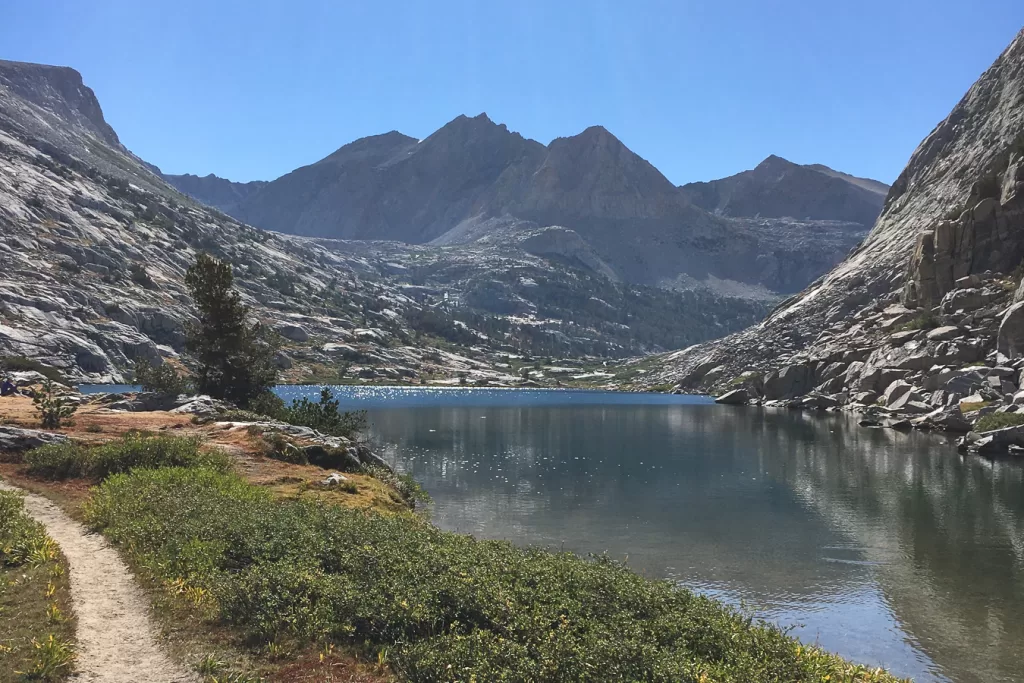
If I had to choose only one hike to make this list, it’s the Pacific Crest Trail. Since 2016, I’ve, quite literally, dreamed of hiking the PCT. In fact, this storied trail is what hooked me on backpacking in the first place. Though I have yet to complete this hike (not for a lack of trying—my 2019 thru-hiking plans were derailed by a torn Achilles just months before my trip, and in 2020, COVID forced me to pivot to the shorter John Muir Trail instead), I know that I’ll hike the Pacific Crest Trail one day.
Spanning 2,650 miles from Mexico to Canada across California, Oregon, and Washington, thousands attempt this 4-to-6-month thru-hike every year. A PCT Long-Distance Permit is required to hike this trail for more than 500 miles, which you can apply for on the Pacific Crest Trail Association website. Hikers who choose to head Northbound tend to start in April and early May. Those heading southbound usually set off in July.
The trail is usually divided into five sections: Southern California, Central California, Northern California, Oregon, and Washington. Along the way, you’ll traverse through expansive deserts, mountainous terrain, dense forests, and volcanic fields, experiencing some of the most awe-inspiring places in the United States, if not the world. However, completing this hike requires a tremendous amount of strong will and determination. Snow blankets the mountains well into June or July, making it difficult for early-season hikers to traverse high alpine passes. Fires ravage the route every year, causing detours and closures. And the physical and mental challenge of hiking every day is just too much for many. It is a journey of a lifetime that few embark on, and even less complete.
I am so excited to start tackling these long-distance hiking trails in the future! And hopefully, I inspired you to set out on one yourself. In the meantime, let us help plan your next outdoor adventure! We at GoForth are experts at turning your outdoor dreams into a reality, and we’d love to help curate an unforgettable trip. Click on the button below to learn more about our offerings, and contact us if you’re ready to take the first step toward a life outdoors!



